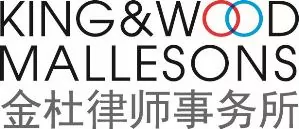Recently, an increasing number of opinions from the State Intellectual Property Office ("SIPO") indicate that applications for patent protection for some inventions do not fall under the scope provided in Paragraph 2 of Article 2 of the PRC Patent Law, which defines an "'invention' as any new technical solution relating to a product, a process, or improvement thereof." Thus, to understand what inventions can be patented, numerous terms such as "technical solution" must be properly defined.
The terms "technology," "technical problem," "technical effect," and "technical feature" are clearly defined in the Patent Law, or the Regulations and the Guidelines. Further to Paragraph 1 of Article 2 of the Patent Law, Part II, Chapter 1 of the Guidelines for Patent Examination (2010 Edition by the SIPO) ("Guidelines") further provides that "'[i]nvention in the Patent Law means any new technical solution relating to a product, a process, or improvement thereof. ...technical means is generally embodied by technical features...a solution not employing technical means to solve a technical problem to obtain technical effects in conformity with natural law does not fall under the scope as set forth in Paragraph 2 of Article 2 of the PRC Patent Law..."
Therefore, the Guidelines instruct an applicant to first consider whether a solution provided by an invention is under the scope of Paragraph 2 of Article 2 of the Patent Law and further defines a technical solution as "a collection of technical means employing natural law to solve technical problems." When analyzing this definition, the following should be considered. A "technical solution" should be construed to have employed 1) technical means, 2) solved technical problems, and 3) achieved technical effects in conformity with the law of nature. The entirety of the claim should be examined and analyzed to determine whether technical means are employed.
Case Study:
An umbrella with an ornamental umbrella head that features a transparent umbrella head with an airtight inner cavity, an anti-freezing aseptic liquid is encapsulated in the inner cavity of the umbrella head and a small free-flowing ornament is immersed in the liquid. The description discloses that the problem the invention intends to solve is to make the umbrella more alluring.
Case Analysis
Because the umbrella head has a three-dimensional and dynamic ornament, the present application employs technical means. On the surface, this patent application aims to solve the technical problem by making the umbrella more alluring. However, the present invention modifies the umbrella structure by employing the technical means of filling a transparent, airtight inner cavity in the umbrella head with liquid and a small ornament to solve the technical problem that displays the said ornament floating in the umbrella head. As a result, this modification achieves the technical effect that the ornament floating in the umbrella head visibly and aesthetically. On the other hand, the alluring appearance of the umbrella is merely a derivative of the visual effect of the technical solution and cannot conceal its feature in constituting the technical solutions. Consequently, the features specified in the claim form a technical solution.
The present application utilizes the umbrella head's structural feature as a technical feature. By exploiting the said technical feature with technical means, it solves a technical problem by displaying the small ornament flowing in the transparent umbrella head. Furthermore, the naturally achieved effect is a technical effect.
From this example, it can be determined that if technical means consists of technical features, its solved problem is generally a technical problem, and its achieved effect is generally a technical effect in conformity with the law of nature. Essentially, contents recited in most inventions in the art of machinery can generally constitute a technical solution so long as the technical means employed consists of technical features.
The content of this article is intended to provide a general guide to the subject matter. Specialist advice should be sought about your specific circumstances.


